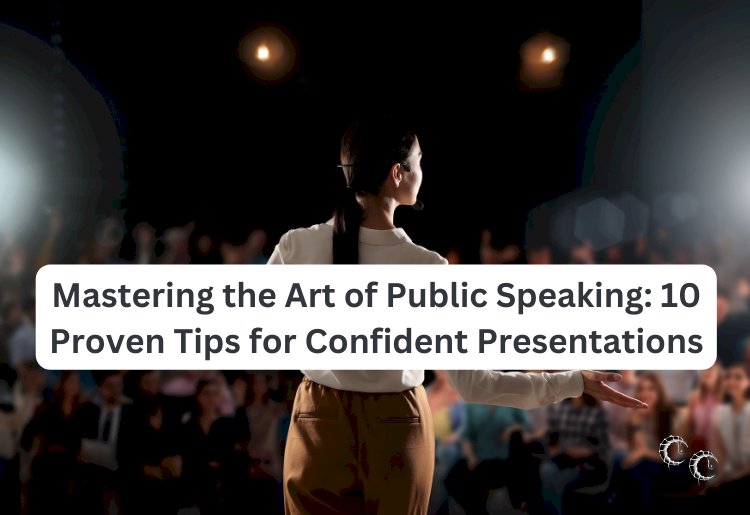Mastering the Art of Public Speaking: 10 Proven Tips for Confident Presentations

Hey all you out there in Cyberspace,
Public speaking is often cited as one of the most common fears among people, but with practice and preparation, anyone can become a confident and effective speaker. Whether you're giving a presentation at work, speaking at an event, or delivering a speech in front of a large audience, mastering the art of public speaking is a valuable skill that can open doors to new opportunities. In this article, we'll explore 10 proven tips to help you deliver confident presentations and captivate your audience.
-
Know Your Audience: Before you step onto the stage, take the time to research and understand your audience. What are their interests, concerns, and expectations? Tailor your message to resonate with your audience and address their needs and interests. Connecting with your audience on a personal level will help you build rapport and capture their attention from the start.
-
Practice, Practice, Practice: The key to confident public speaking is practice. Rehearse your presentation multiple times until you feel comfortable with the material and delivery. Practice speaking in front of a mirror, recording yourself, or delivering your speech to a trusted friend or colleague for feedback. The more you practice, the more confident and polished your presentation will become.
-
Structure Your Presentation: A well-structured presentation is essential for keeping your audience engaged and focused. Organize your content into clear and concise sections, including an introduction, main points, and conclusion. Use transitions to guide your audience from one point to the next, and incorporate visual aids or storytelling techniques to enhance comprehension and retention.
-
Start Strong: Grab your audience's attention from the outset by starting strong. Begin with a compelling opening, such as a thought-provoking question, a relevant anecdote, or a surprising statistic. A strong opening will hook your audience and set the tone for the rest of your presentation, making them more receptive to your message.
-
Maintain Eye Contact: Eye contact is a powerful tool for engaging your audience and building trust and credibility as a speaker. Make eye contact with individuals throughout the room, scanning from one person to the next. Avoid fixating on one spot or reading from notes or slides, as this can create a disconnect with your audience.
-
Control Your Body Language: Your body language can convey as much—if not more—than your words. Stand tall with your shoulders back and maintain an open posture to exude confidence and authority. Use gestures and facial expressions to emphasize key points and convey enthusiasm and passion for your topic. Pay attention to your breathing and avoid fidgeting or distracting mannerisms that can undermine your message.
-
Engage Your Audience: Create opportunities for audience engagement to keep them actively involved in your presentation. Ask questions, encourage participation, and invite feedback or discussion throughout your speech. Incorporate interactive elements such as polls, group activities, or Q&A sessions to foster a dynamic and inclusive environment.
-
Be Authentic: Authenticity is essential for establishing a genuine connection with your audience. Be yourself and let your personality shine through in your presentation. Share personal stories, anecdotes, or experiences that resonate with your audience and add authenticity and relatability to your message. Authenticity breeds trust and credibility, making you a more persuasive and compelling speaker.
-
Manage Nervousness: Feeling nervous before a presentation is normal, but learning to manage your nerves is key to delivering a confident performance. Practice relaxation techniques such as deep breathing, visualization, or positive self-talk to calm your nerves and boost your confidence. Focus on the message you want to convey and the value you bring to your audience, rather than dwelling on your fears or insecurities.
-
Seek Feedback and Continuous Improvement: Even the most seasoned speakers can benefit from feedback and constructive criticism. After your presentation, solicit feedback from audience members, colleagues, or mentors to identify strengths and areas for improvement. Reflect on your performance and seek opportunities for continuous learning and growth. With each presentation, strive to refine your skills and become an even more confident and effective speaker.
Mastering the art of public speaking takes time, effort, and dedication, but the rewards are well worth it. By implementing these 10 proven tips, you can boost your confidence, captivate your audience, and deliver presentations that leave a lasting impression. Whether you're speaking to a small group or a large audience, remember to be authentic, prepared, and engaged, and you'll be well on your way to becoming a confident and persuasive speaker.


























